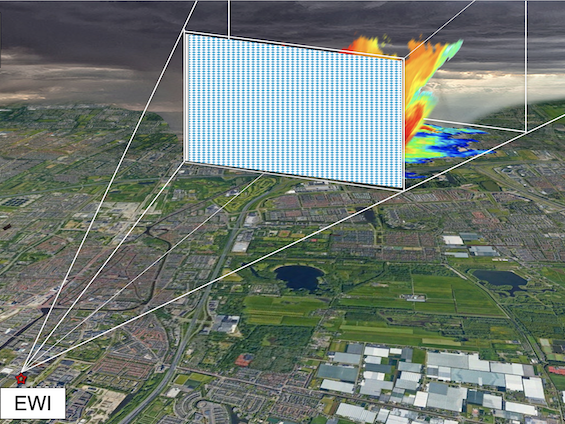Understanding Extreme Weather Phenomena: PHARA's 3D Radar Project's first official Summit
To better understand and mitigate the urgent impact of extreme weather phenomena, we first need better weather radars. Under the name PHARA, a collaborative team of scientists and engineers aim to develop a pioneering phased array weather radar – first of its kind in Europe and one of the first worldwide. This joint effort TU Delft, TU Eindhoven, TNO, Robin Radar, Astron, KNMI, and the Rijksuniversiteit Groningen, officially had its first summit on May 30.
In the past month alone, the Netherlands has experienced several extreme weather phenomena, including cloud bursts that have led to serious floods. For instance, Noordwijk was significantly affected by such an event, highlighting the urgent need for advanced weather monitoring technologies. With climate change ongoing, the frequency and severity of these floods are expected to increase. Already, estimated annual damages in the Netherlands alone reach up to €745 million.
The PHARA project is focused on creating the world's first 3D weather radar capable of measuring the growth processes of cloud particles. This new technology is set to provide unprecedented insights into how cloud particles move, collide, and coalesce, which is critical for understanding and predicting extreme weather events. By upgrading traditional 2D weather radars to a 3D system, meteorologists can see more than just thin slices of clouds, and study flow profiles of clouds over time.
In addition to enhancing the understanding of extreme weather phenomena, the 3D radar developed by the PHARA project has several other valuable applications. It can significantly improve the monitoring of wind dynamics in wind parks, optimizing energy production and turbine maintenance. Furthermore, the radar's ability to provide detailed atmospheric data can help protect crops by forecasting and mitigating the effects of adverse weather conditions. In busy shipping harbors, a 3D radar can aid in navigating through severe weather, ensuring safer and more efficient port operations. These diverse applications underscore the broad potential impact of the PHARA's technological advancements.
It takes a team
The PHARA project is a testament to teamwork and interdisciplinary collaboration. Led by Professor Olexander Yarovyi from TU Delft, the project brings together a diverse group of organizations, including TU Delft's CiTG faculties, TU Eindhoven, TNO, Robin Radar, Astron, KNMI, and the Rijksuniversiteit Groningen. Each team member contributes specialized knowledge, from manufacturing and meteorological expertise to computer engineering and data analysis.
Professor Yarovyi emphasizes the collective enthusiasm and dedication of all involved: "In short, the PHARA project represents a massive opportunity to advance our understanding both innovative radar systems, and extreme weather and its possible impact on society."

